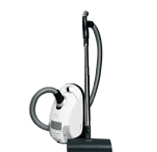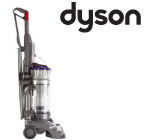 For those who suffer from pollen allergies in the spring and ragweed allergies in the fall, winter can seem like a welcome relief from potent allergy triggers. But while it’s true that winter may mean a respite from many outdoor allergens, your indoor environment may be worse than at any other time of year. This is because you are spending more time indoors. In addition, because your home is closed off from the cold weather and receives minimal air circulation, indoor pollutants and allergens gather in the home in concentrations higher than at other times of the year. One of these most potent allergy triggers is dust. For those who suffer from pollen allergies in the spring and ragweed allergies in the fall, winter can seem like a welcome relief from potent allergy triggers. But while it’s true that winter may mean a respite from many outdoor allergens, your indoor environment may be worse than at any other time of year. This is because you are spending more time indoors. In addition, because your home is closed off from the cold weather and receives minimal air circulation, indoor pollutants and allergens gather in the home in concentrations higher than at other times of the year. One of these most potent allergy triggers is dust.
Vacuuming Away Those Winter Allergens
Although winter allergens can include an increase in mold and other environmental allergens vacuuming regularly to keep dust and pet dander at a minimum will have a profound effect on your winter allergy symptoms. Following are some important tips for vacuuming thoroughly:
-
- Start out with a clean vacuum. In order to maximize suction and, therefore, the effectiveness of your vacuum cleaner, start each major vacuuming session with a cleaned-out vacuum. If you have a bagless vacuum cleaner, such as a Miele Blizzard CX1 Turbo Team, make sure to wear a dust mask when you empty your unit, so you don’t inhale dust and debris. In the case of a vacuum cleaner that uses bags, such as many Miele and Sebo vacuum cleaners, make sure that bags aren’t full and check them periodically. Also make sure to maintain vacuum filters – check them regularly and replace according to manufacturers recommendations.

-
- Vacuum everything that can be vacuumed. Vacuum cleaners aren’t just for carpets. Just about anything that can collect dust can be vacuumed. For instance, window blinds or shutters are virtual dust magnets; make sure to vacuum them, too. Use your Vacuum Cleaner Attachments to make this task a breeze.
 Ceiling fans are another dust collector. Although you could get up on a chair and use an microfiber dust cloth to clean the blades (don’t ever use a feather duster or plain rag, as they will simply stir more dust into the air), why not incorporate this chore into your vacuuming routine? Ceiling fans are another dust collector. Although you could get up on a chair and use an microfiber dust cloth to clean the blades (don’t ever use a feather duster or plain rag, as they will simply stir more dust into the air), why not incorporate this chore into your vacuuming routine?
 Drapery is another big dust collector that can often be vacuumed. And don’t forget your mattress and upholstered furniture, favorite spots for dust mites, and pet dander. Vacuuming them regularly can help keep allergen levels under control. Drapery is another big dust collector that can often be vacuumed. And don’t forget your mattress and upholstered furniture, favorite spots for dust mites, and pet dander. Vacuuming them regularly can help keep allergen levels under control.
- Vacuum top to bottom. Start with the highest surfaces in the room, like the tops of bookshelves and ceiling fan blades. This way, dust that is stirred into the air inadvertently will get picked up when you move to vacuum the floor and carpeting.
- The dust is in the details. Don’t overlook small surfaces like door frames, window frames, and molding. These surfaces may not receive much regular cleaning, and they may be layered with dust. Once a first-time cleaning is performed, make sure to go over these surfaces regularly to keep dust from collecting.
- Practice good technique. In addition to making sure to vacuum everything that can be vacuumed and not forgetting any of the details, the way you vacuum impacts your vacuuming routine’s effectiveness. Moving the vacuum cleaner slowly over surfaces maximizes the amount of dust and debris the vacuum cleaner picks up. In addition, it’s a good idea to pass the vacuum cleaner over each area about four times, especially when vacuuming carpeting and upholstery. Vacuuming in a few different directions also enables the vacuum to pick up more dirt. Take care not to press the vacuum cleaner down onto the carpet, as this will mat the fibers and make the carpet harder to clean in the future.
- Dust collects fast; vacuum frequently. Although it may not be necessary to do a completely thorough vacuuming routine this often, we recommend that allergy sufferers vacuum their entire homes at least twice a week. At least high-traffic areas and bedrooms should be vacuumed frequently. All carpets and rugs should be vacuumed at least once a week. Mattresses, upholstery, and drapery should be vacuumed regularly. And if pets are present, it’s a good idea to be especially frequent and regular with your vacuuming routine.
Vacuum Cleaners: Our Top Picks
Following are our top picks, both bagless canisters designed for specific purposes and price points.
 |
The Miele Blizzard CX1 Pure Suction Bagless Canister Vacuum offers the best of the best with a more affordable. Running at about three-fourths the price of its most luxurious cousin, the Miele CX1 Cat & Dog Bagless Canister Vacuum, the Miele Pure Suction features a fine dust filter to trap microscopic dust and hygienic one touch button emptying for a cleaner emptying experience. Both large and small debris is vacuumed into separate containers, furthering this bagless vacuum’s hygienic nature. This innovative technology, paired with the Gore® Cleanstream Fine Dust Filter, not only protects and prolongs the life of the motor but also eliminates the expense of replacement filters and vacuum bags. A special floor brush allows for gentle yet effective cleaning of wood and tile floors. On-board tools include a Crevice Tool, a Dust Brush, and an Upholstery Tool. Built to last, Miele Vacuums are durable yet lightweight. At under 11 pounds, you won’t have to think twice about cleaning your whole home with this vacuum. Regardless of the Miele you choose, all come with free expedited shipping. |
 |
The Miele Blizzard CX1 Cat & Dog Bagless Canister Vacuum Cleaner, with its superior bagless design, it’s ideal for pet owners who suffer from allergies. The powerful vortex motor and Electro-Plus Floorbrush suck up pet dander, dust, and other allergens, while a HEPA lifetime filter keeps microscopic allergens from re-entering the air. In addition, the Miele Cat & Dog comes with a host of other attachment tools to make your vacuuming routine easy and thorough at the same time. The tools, such as the handheld turbo brush for cleaning stairs and the SwivelNeck Parquet Floorhead for cleaning easily under beds and other hard-to-reach areas, are stored directly on the unit for easy access. The crevice tool, dusting brush, and upholstery nozzle also come with the Cat & Dog. |
Additional resources:
Indoor Air Quality: Worse During Winter

So why is indoor air so bad during the wintertime? A combination of more time spent indoors by both people and pets and the lack of ventilation is mostly to blame. Common household pollutants, such as fragrances, cleaning products, and off-gassing from various materials from upholstery to dry-cleaned clothing, are trapped inside the home, which is tightly sealed to keep the cold out and the warmth in. Smoke from a fireplace is also a potential cold-weather indoor air pollutant. Furthermore, factors such as humidity from showers or the kitchen may not ventilate properly and could lead to mold and mildew production. Dust mites, too, thrive in increased humidity. (This is why it is important to monitor humidity, especially if you are counteracting dry air problems, with a humidity gauge or with your humidifying units built-in hygrometer.)
In addition to loving the excess humidity that may be present in your home during the winter, dust mites also love the increased amount of time you are spending indoors (especially if you’re spending more time snuggled up in bed, where dust mites congregate, waiting to feast on your shed skin cells) their food supply is abundant. To add to the trouble, furnaces stir up the dust that has settled on surfaces and may even introduce dust from dirty air ducts into the air that you breathe. It is then advised to hire a heating contractor or hvac services technician to service your heating system that can help improve your indoor air quality. An annual heating system repair service is recommended to maintain your heating unit’s efficiency.
Winter allergies are in large part a product of this elevated population of dust mite allergens combined with your increased exposure time due to the long hours spent indoors. Many times, people assume that the sniffling, headaches, itchy eyes, and sneezing they experience during the winter are extended or recurring colds. Often, these are allergic reactions to the dust that accumulates during the winter. Maintaining a dust-free indoor environment can go a long way in keeping you and your family from feeling like you have a perpetual cold. The key to keeping excess levels of dust mite allergen under control during the winter months is frequent and thorough vacuuming.
For more information about effective vacuum cleaning, see How to Vacuum Your Home to Reduce Allergens. |
 For those who suffer from pollen allergies in the spring and ragweed allergies in the fall, winter can seem like a welcome relief from potent allergy triggers. But while it’s true that winter may mean a respite from many outdoor allergens, your indoor environment may be worse than at any other time of year. This is because you are spending more time indoors. In addition, because your home is closed off from the cold weather and receives minimal air circulation, indoor pollutants and allergens gather in the home in concentrations higher than at other times of the year. One of these most potent allergy triggers is dust.
For those who suffer from pollen allergies in the spring and ragweed allergies in the fall, winter can seem like a welcome relief from potent allergy triggers. But while it’s true that winter may mean a respite from many outdoor allergens, your indoor environment may be worse than at any other time of year. This is because you are spending more time indoors. In addition, because your home is closed off from the cold weather and receives minimal air circulation, indoor pollutants and allergens gather in the home in concentrations higher than at other times of the year. One of these most potent allergy triggers is dust.



 Drapery is another big dust collector that can often be vacuumed. And don’t forget your mattress and upholstered furniture, favorite spots for dust mites, and pet dander. Vacuuming them regularly can help keep allergen levels under control.
Drapery is another big dust collector that can often be vacuumed. And don’t forget your mattress and upholstered furniture, favorite spots for dust mites, and pet dander. Vacuuming them regularly can help keep allergen levels under control.

